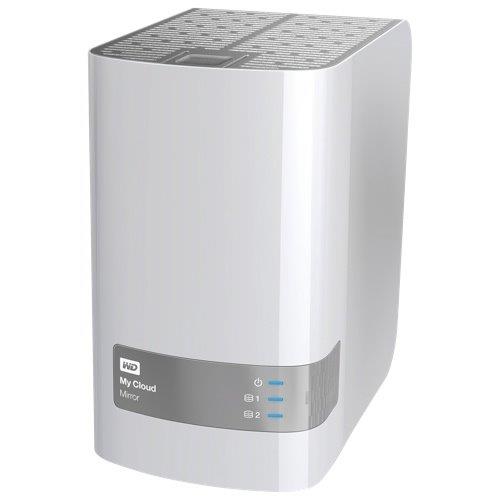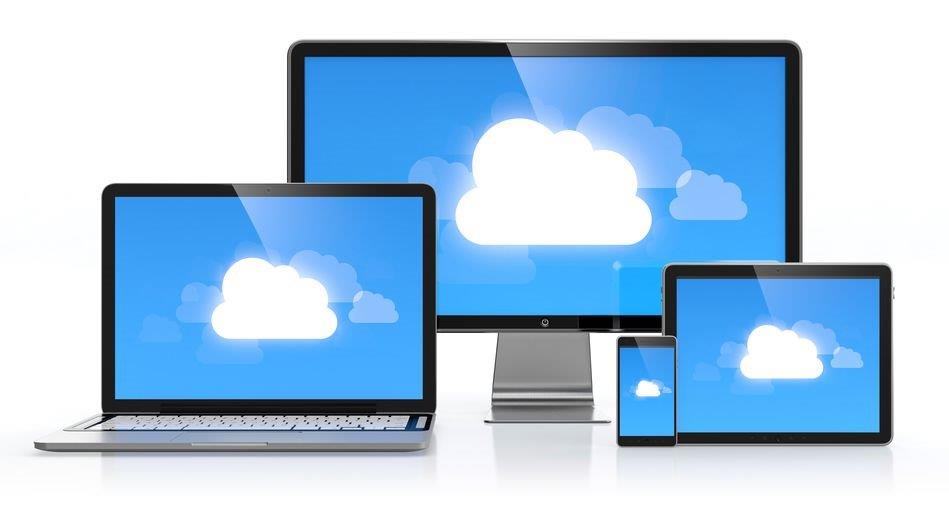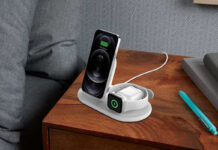
Cloud computing may be a new concept for many consumers, but it has played a huge part in many of our day-to-day interactions with technology and each other for some time now. Here’s how to set up a personal cloud and what one needs to consider.
The Cloud is really a series of powerful servers which are connected to our smartphones, tablets and PC’s. It has long been a part of our computing experience. If you use Gmail, Yahoo Mail, Skype, Dropbox, Evernote and iCloud, then you’re already using the cloud.
The Cloud is all around us, how do we control it?

Google’s affordable Chromebooks are ideal examples of cloud connected devices. Basically running apps on a browser, Chromebooks use the Google Cloud to do the heavy lifting, store files and access services and applications.
Since most of the important information is stored and backed-up on the cloud, it is easy to recover from a huge crash or a stolen or broken Chromebook. Simply sign into your account on another Chromebook and if you’ve set your previous one correctly, you should have access to all your files and programs.
 Apple’s iCloud is a perfect example of how companies use cloud services to entice and retain customers into their ecosystems. If you have an iOS device or a Mac, all your information is tied up to your account.
Apple’s iCloud is a perfect example of how companies use cloud services to entice and retain customers into their ecosystems. If you have an iOS device or a Mac, all your information is tied up to your account.
 This means that you can answer phone calls from your MacBook (or your iPad) if they are connected to your iPhone on the same account.
This means that you can answer phone calls from your MacBook (or your iPad) if they are connected to your iPhone on the same account.
You can also start messaging on your Mac and continue on your iPhone using the Handoff and Continuity features, this happens automatically because of tight cloud integration.
Setting up one’s own cloud is quite easy. There are a lot of free or freemium (free to start but you pay for premium features or more storage) cloud services out there. For many free cloud or backup services, all you need to enter is your email address and a password, just like your web-based email service.
Take for example Microsoft’s OneDrive, which comes as a bonus with Office 365 subscriptions, and which allows you to store hundreds of gigabytes of information online. Not only does it store files and photos automatically, you can even access your Microsoft Office documents and even work on them using the Office for the Cloud.
Another popular service is Google Drive, which actually contains storage, document creation and collaboration features. Google Drive and OneDrive are examples of popular cloud services that anyone can get access to, but there are also options for anyone considering a more private or personal cloud.
A Cloud for your home and office

Many of us bring our smartphones, tablets or notebooks with us at school, work, or home. While the amount of digital content we carry on those devices may be limited by their storage capacity, connecting to a more personal cloud solution allows us to access or stream content on demand.
One way to enable this is to invest in Network Attached Storage (NAS). A NAS is essentially a secure and connected server that replicates what cloud servers on the Internet offer. A NAS can be used to backup information like photos, documents, movies and music (as well as play them back on any connected device). But a NAS can also run programs and apps and be used as a streaming source for your connected devices, Smart TVs and consoles.
 A NAS can be accessed locally or even remotely if properly configured and can be extended in the way it is used. Some people attach IP cameras to their NAS which allows them to be home-monitoring and security devices (accessible from your mobile device).
A NAS can be accessed locally or even remotely if properly configured and can be extended in the way it is used. Some people attach IP cameras to their NAS which allows them to be home-monitoring and security devices (accessible from your mobile device).
The best thing about NAS devices is that they are designed to save data in the event of failure. You can simply swap a defective drive to restore your most recently saved data and files.
This becomes really important in small office set ups where managing an increasing flow of data can be challenging.
Manufacturers of NAS devices have managed to make installing and enabling home and office cloud services very easy.
You simply plug the device in, join your home network via WiFi or Ethernet (this is preferred for faster transfers). A lot of the configuration happens via a connected webpage or even mobile apps which allow you a vast amount of control over some complex functions.
There are a variety of apps and freeware that are freely available to NAS users which run the gamut from music and video servers, print server, databases and many others.
The best thing about setting up a cloud server or NAS, is that you only need to do it once. It is easy to maintain and a lot of the updates and upgrades can be automated.
In my home office, I have a NAS that serves as a backup for various PCs and Macs. The NAS is also my repository for the thousands of pictures I take of products, trade shows and even personal photographs of friends and family. In the past, these pictures were everywhere and mostly stuck in whatever computer I was using at the time.
Increased rate and size of media necessitates more cloud storage

Now, I simply save everything to my NAS and it is neatly organized by date, location or even topic. The same goes for my digital music collection, which can be streamed quite easily from my PC, tablet, or phone.
We’re now consuming more data than ever, taking more pictures at an exponential rate, and saving media that’s increasingly becoming higher resolution (1080p HD video, 4K video and High Resolution Audio files), the problem is where we can store all this information.
The Cloud is helpful because it saves files and data online and makes them securely accessible through any connected device.
Securing the Cloud
 The one fear many have with the Cloud is that security could be easily compromised. After all, all one has to do is hack someone’s cloud account and they will have access to all their valuable data.
The one fear many have with the Cloud is that security could be easily compromised. After all, all one has to do is hack someone’s cloud account and they will have access to all their valuable data.
While there’s certainly always a danger that this could happen since nothing is ever 100 per cent secure, there are various ways to keep your data safe on the Cloud.
This includes creating complex passwords, encrypting the data, two-factor authentication as well as enabling alerts to your email or mobile number each time someone tries to access your account.
These are just some options for setting up personal cloud services online or in your home or office to help store, organize and stream your media, photos, files and documents.





































